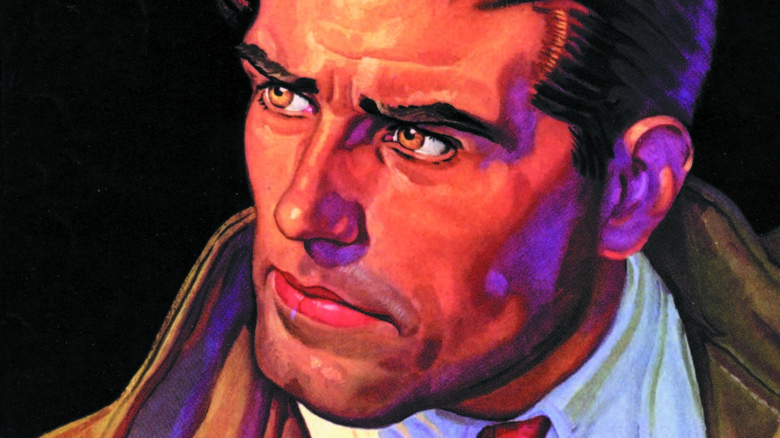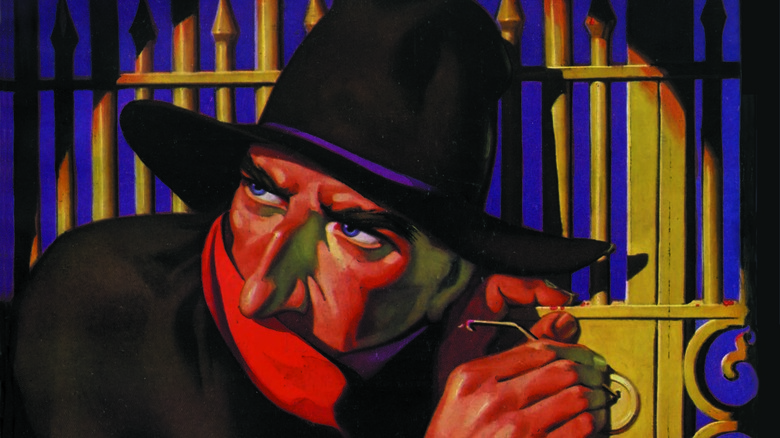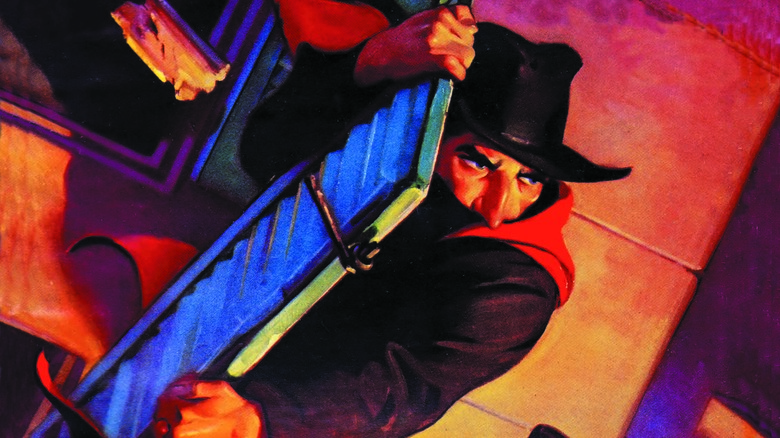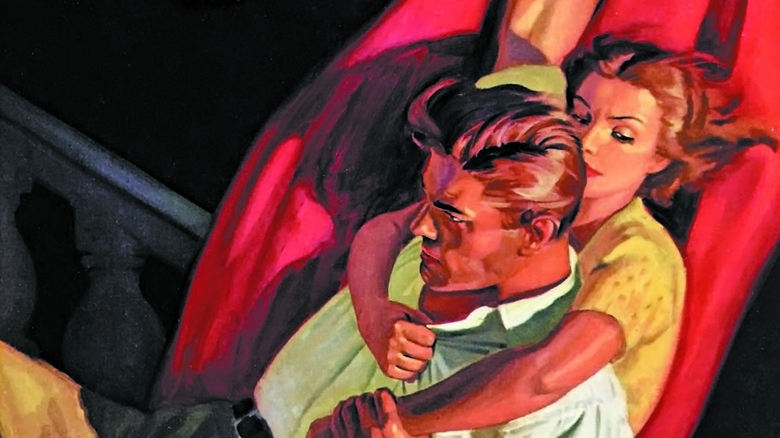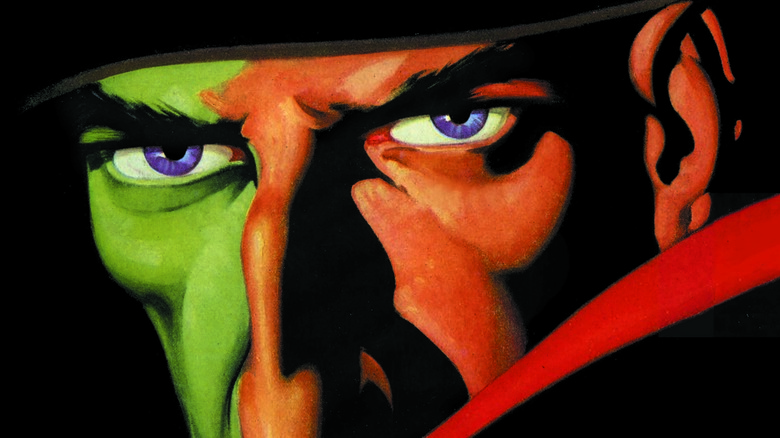Neil McGinness' Pulp Power Explores The Art Of The Original Superheroes - Exclusive Interview
Before there was Batman and Superman, there was The Shadow and Doc Savage. The heroes of these pulp novel series, published by Street & Smith in the 1930s and '40s, heavily inspired the Golden Age comic writers and helped form the basis of the superhero genre that now dominates pop culture. The Shadow and Doc Savage became media juggernauts, appearing on radio, in film serials, and in comic books, while Street & Smith would expand its pulp empire with more heroes such as The Avenger and The Whisperer and reviving the older detective character Nick Carter.
"Pulp Power: The Shadow, Doc Savage, and the Art of the Street & Smith Universe," in stores July 26, is a new book by Neil McGinness (with an introduction by Frank Miller of "The Dark Knight Returns" and "Sin City" fame) digging into the history of these characters, with a particular emphasis on the exceptional cover art illustrations given to these novels throughout the decades. McGinness has been a passionate advocate for these characters, The Shadow in particular; he consulted on DC's "Batman/The Shadow" crossover comic series in 2017 and on James Patterson and Brian Sitts' 2021 "The Shadow" novel.
Looper got the chance to speak to McGinness about what makes these characters so interesting, which books might be the best places to start for new readers, and how Hollywood might finally get The Shadow right in the future.
Neil McGinness got into The Shadow via radio
You've built a career out of helping revive these 1930s pulp characters in modern media. How did you first become a fan?
I was a fan of The Shadow from the radio era initially and grew up listening to old clips of "The Shadow" and hearing about his exploits and following that along. Most of my interests tend toward regular fiction, serialized fiction. When I discovered "The Shadow" novels later on, it was like, "Oh, there's an even richer side, a more mysterious side or dimension to this character than I even realized." Because the radio Shadow was very different from the novel Shadow.
What do you say are the biggest differences between the radio version and the novel version?
Well, [in] the radio version, Margo Lane is much more of a fixture in all of the episodes. The Shadow in the radio version is much more Lamont Cranston, the man about town. Typically, you get more Lamont Cranston. There's also very little in the radio context where The Shadow will ... He won't intentionally harm or kill someone. It's more [that] he will set them up. He will trap the crooks in a way that they hoist themselves on their own petard, in a sense.
Favorite books and favorite artists
There are hundreds of stories out there about The Shadow and Doc Savage. For those curious about getting into these characters, where would you recommend new readers start? Do you have any particular favorite novels in the series?
Any of the New York-based ones. "Partners of Peril" [and] "Black Falcon" would be a couple that spring to mind that are viewed as classics. What's great about the stories, too, is they can get into non-straightforward crime — "shoot 'em ups" too. Stories like "The Voodoo Master" will introduce the concepts of mind control, zombies, this sort of thing, so you can get that flavor. It'll all take place in New York a lot of the time as well. "Voodoo Master" would be another one that people tend to single out as a favorite, just because the villain is so fierce.
"Pulp Power" is in large part a celebration of the cover art for these books. Who's your favorite of the cover artists featured in your book?
James Bama, in terms of an American realist, was an exemplary artist. There was no world that he couldn't create, and [he] was classically trained ... Bama was able to put a sci-fi dimension into "Doc Savage," which was really unique in the covers that he did for the reintroduction of the novels that went through the '60s and '70s. The interesting thing about Bama from an artistic perspective is he was able to utilize a single palette, almost like a multi-chromatic palette, based off of the same shades of a single color. That made for striking cover art for the "Doc Savage" novels that he did. But in general, I'm a fan of all of the art.
Even the '30s art ... The United States in the 1930s was experiencing what I would consider to be a Golden Age of creativity, [which] expressed itself not only in all the literature and fiction and Fitzgerald and Hemingway and all the things that were coming out, but also in the great art that was being done by Norman Rockwell. In the case of "The Shadow," [that was] George Rosen; Walter Baumhofer did most of the "Doc Savage" novels. These were really well-trained illustrators and artists, and it shows in their work and it's been fun to watch the marketplace. One of the things the book touches on is the way that the marketplace now, for collectors, is going back to these original artworks by these master painters and raising the values and appreciation of their work, which is neat to see.
Street & Smith's proto-Justice League
The Shadow and Doc Savage are obviously the most legendary of the Street & Smith characters. Their chapters take up over half the book, and they're the ones that either have current or proposed reboots. Of the lesser-known Street & Smith characters, however, are there any that you think deserve more of a spotlight?
It's a great question. The one that pops to mind is the character Supersnipe. In what I'll call the universe of Street & Smith, you're right — you have Doc Savage, you have The Shadow. Then you have characters that are modeled in between the two with The Avenger and The Whisperer and Justice Inc., which is a formation of The Avenger's helpers and accomplices.
But the character we've started to take a look at that I find very interesting is Supersnipe. "Supersnipe" is the story of a boy, Koppy McFad, who had the greatest amount of comics in the entire world. He would break the wall of reality when he would read his comics and transport himself into a superhero. Even though he would be still in his suburban bedroom with his parents downstairs, he was fighting evil creatures and villains all over the world in his imagination.
That character, as an attempt, was to create a more younger-skewing character within this universe. [That] was really interesting, especially when we found instances where the Supersnipe character would team up with The Shadow and Doc Savage in their comic form, and they would unite — almost, in a sense, forming an early version of the Justice League before such a concept really came into being.
The Shadow's influence on Frank Miller
Hollywood tried adapting "The Shadow" in 1994, and it was a major flop. Since film and streaming rights are being negotiated for James Patterson's new "The Shadow" novels, what do you think needs to be done differently this time?
It's a good question. I'm not the film person, so I'm not really qualified to answer that. But if you stick to the story — if you stick to that thing that makes The Shadow different, which is the mental mastery that he can convey against opponents — and add maybe more of what I'll call "the Matrix element" to it, it could be a very compelling story. The whole notion of mind control and some of his training in that field could make for an interesting twist on the character visually and cinematically, for sure.
What was it like getting Frank Miller to write the introduction for this book?
Well, it was an honor. Frank is a true artistic visionary, so to find out that he had a passion and an interest and an appreciation for how these stories and characters shaped the worlds that he would go on to later create, that everyone is familiar with ... [That] was pretty exciting to be on the inside when he put words together to describe his interest in this era. What it did is it again underscored that idea of this period in American history being a Golden Age of artistry. Before the war, there was this period of almost innocence where people like Walt Disney were free to imagine these new creations on almost every level.
That was one of the things that was interesting with the book, and something that Frank Miller's been very adept at is translating his worlds into cinematic success. Getting a chance to see the moments in time when ... Going back to the beginning of the interview, when you talked about radio versus the novel, one of the great things about The Shadow is he plays throughout these different media. These media are in their infancies, as The Shadow is kind of the first hero or heroic character to take part in them. To be one of the first radio heroes — and to see how that would eventually lead into serial films from Columbia and ultimately to the movies later on — is really interesting in the course of media matters and development in America.
"Pulp Power: The Shadow, Doc Savage, and the Art of the Street & Smith Universe" goes on sale July 26.
This interview was edited for clarity.
